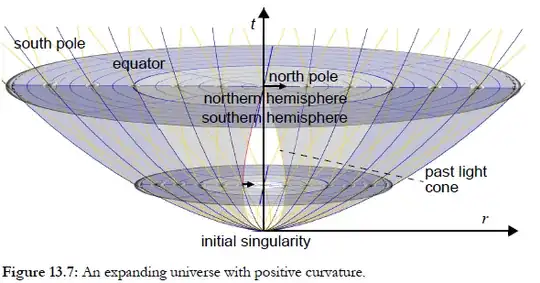At which point in time in the history of our universe was the observable universe exactly as big as the entire universe? Does the Hubble Deep field represent such a time? Does this question make sense or am I forgetting that the observable universe grows directly proportional to universal expansion?
1 Answers
Even assuming a finite (positive curvature) universe the observable universe consists only of that part of it from which light can reach us in the time since the big bang. This diagram from my book may help. The observable universe is represented by the white region in the core.
If the universe is infinite there will always be parts of it outside the finite region from which light can reach us in finite time.
If it is finite, there can become a time when light can reach us from all parts of the universe. The time is model dependent, but in the idealisation of a matter only model, with no cosmological constant, this will be at the point of maximum expansion, at which point the universe starts to contract leading to a big crunch (in practice it will be a little later because of radiation).
- 11,871
